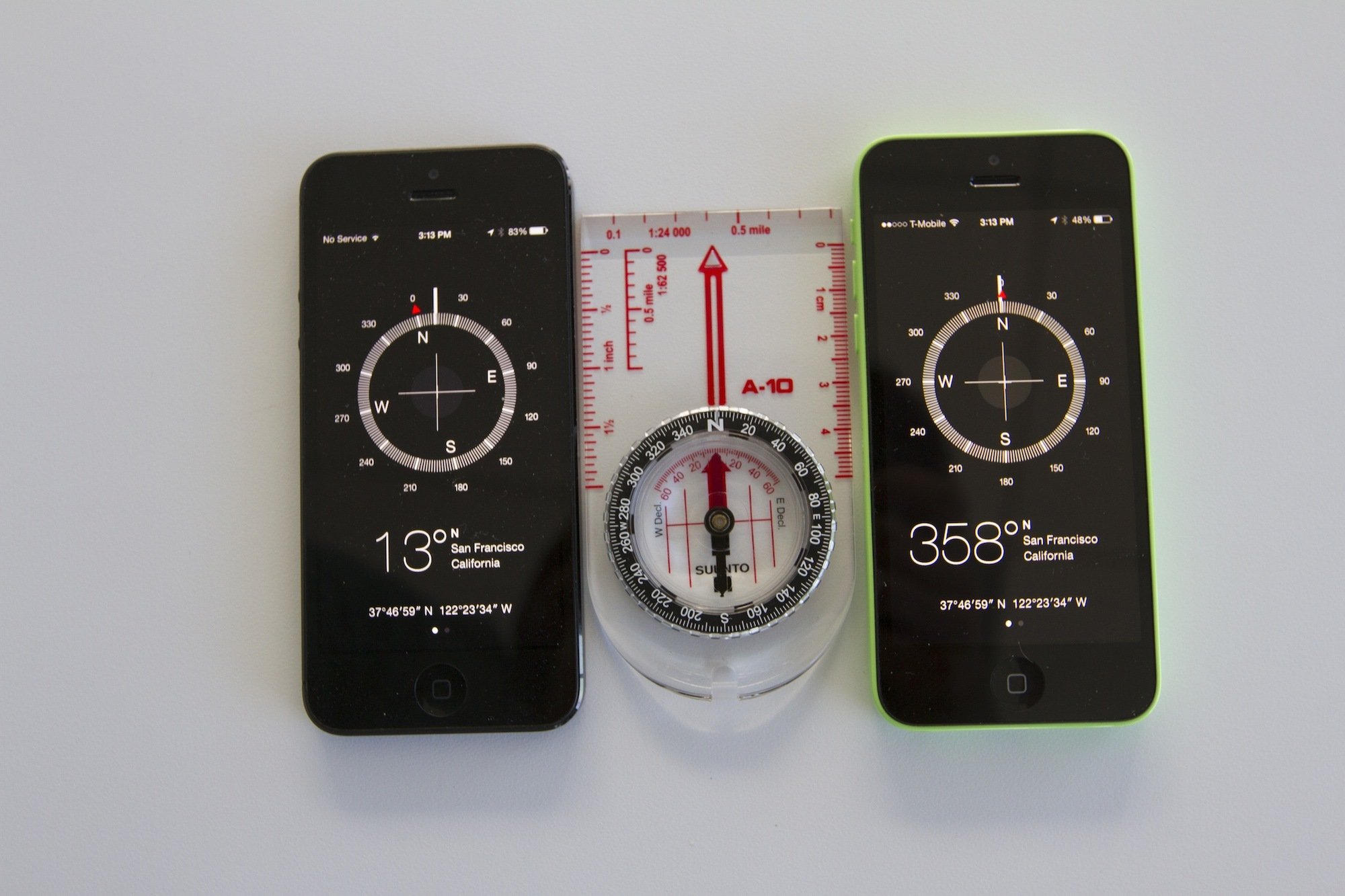Dupa publicarea recentelor informatii care indica faptul ca inlocuirea producatorului de accelerometre pentru iPhone 5S a generat o problema cu afisarea corecta a nivelului de inclinare a terminalelor, cei de la macworld s-au gandit sa testeze problema. Ajutati, cel mai probabil, de catre Apple, cu care au o relatie extren de stransa, cei de la Macworld au aflat ca toate terminalele iPhone comercializate dupa iPhone 4, inclusiv, au probleme cu indicarea corecta a punctelor cardinale, insa pentru niciunul nu s-au descoperit probleme in ceea ce priveste inclinarea.
We first noticed that something was amiss while trying to replicate Gizmodo’s findings that the iPhone 5s has orientation sensors to the ones in the iPhone 5. Unlike Gizmodo, we didn’t find anything wrong with the leveling capabilities of the multiple iPhones we had lying around. We did, however, find that their sense of direction was completely unreliable, with readings across different phones disagreeing wildly. Worse yet, the problem persisted even after re-calibrating the phones eight different times.
Toate terminalele iPhone indica in mod gresit punctele cardinale, ele avand o deviatie de care variaza de la doar cateva grade pana la cateva zeci de grade, acest lucru afectand atat compasul, cat si aplicatiile de navigatie, lucru observat de catre mine in Apple Maps si Google Maps. iPhone 4, iPhone 4S, iPhone 5, iPhone 5C, iPhone 5S si LG G2 au fost utilizate pentru aceste teste, iar terminalul Android a avut cea mai mica variatie fata de un compas normal, el indicand punctele cardinale cu o eroare de doar 2, 3 grade.
On Thursday we ran a series of tests, and found the Compass app in both iOS 6 and iOS 7 reported screwy results across a wide range of iPhones—from the iPhone 4 to the 5s and 5c. We we re-calibrated each phone multiple times, we and often found the results changed wildely from one test to the next. We ran the test at least three times each, restarting the apps between trials, testing the phones one at a time, as we noticed that having other phones nearby affected the reading of the compasses.
Practic acest test are rolul dea evidentia faptul ca toate terminalele iPhone au probleme in a indica in mod corect punctele cardinale, dar cu inclinarea nu ar exista vreo problema si acest lucru nu este adevarat. Daca Apple a contribuit intr-adevar la metodologia de testare utilizata acum, atunci ramane ca voi sa decideti singuri daca luati in considerare testele sau nu, insa iPhone-urile au intr-adevar probleme mari cu senzorii implementati in ele si din pacate Apple nu prea pare chiar atat de pregatita sa le rezolve.
The iPhone 5s showed that it was pointing to 12 degrees when lined up with our Suunto compass set to zero degrees—true north. Restarting the app and recalibrating the compass found the same iPhone 5s was now 22 degrees off from the Suunto. Restarting the app and calibrating a third time brought the iPhone 5s the closest yet, with a reading of 10 degrees off of our conventional compass. The iPhone 5c’s results were much more consistent with readings of 12, 11, and 9 degrees, respectively. We took five readings with the iPhone 4S and found the results ranging between 9 and 19 degrees off of the Suunto, averaging about 14.5 degrees wrong.
Partea buna este ca folosind metoda explicata de catre mine in acest articol puteti imbunatati, intr-o anumita masura, felul in care functioneaza senzorii acestor terminale, asa ca daca intampinati aceste probleme, temporar le puteti rezolva.
We ran the test on three different iPhone 5 models and found the worst deviation there. One model was not very accurate at all—15 degrees away from zero at best and 28 degrees at worst. That’s pointing starkly northeast! Another iPhone 5 did very well, just 5 or 6 degrees from zero, while a third iPhone 5 fluctuated between a respectable 6 degrees away from north and a truly misleading 21 degrees away.






















